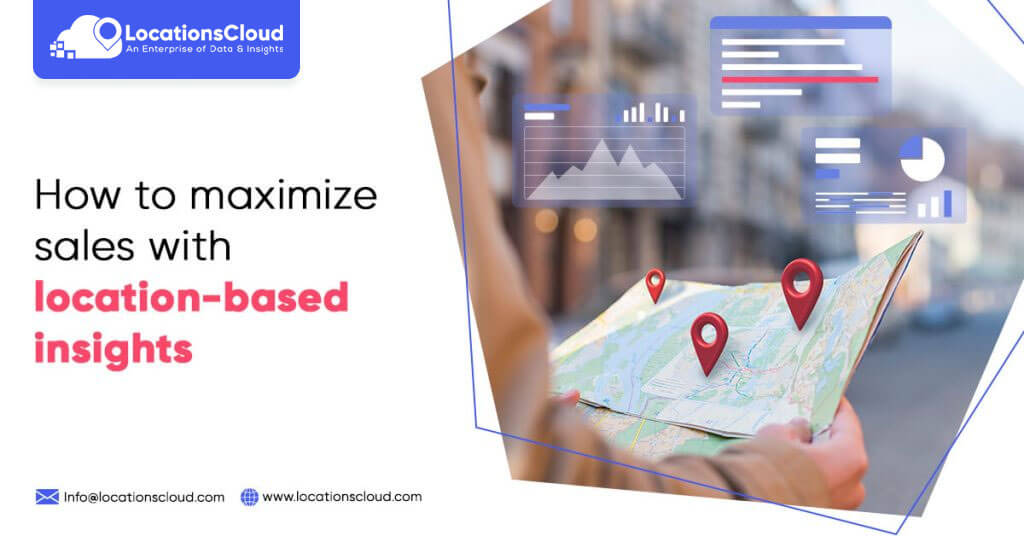
Website conversion optimization is essential for any business. It doesn’t matter if the goal is to make more sales, get more email subscribers, or get more people to see an ad. In the digital world, which is always getting bigger, anything you do with your website will significantly affect your business.
Data analysis is an essential part of optimizing a website. Data can tell you important things about your customers, their interests, buying habits, and how they feel about your brand and the market as a whole.
When you change your website or advertising campaigns, your traffic and other metrics will tell you how well your marketing strategies work.
This data analysis will help you make better decisions about how to market. In the next few paragraphs, we’ll discuss why location data is essential and how it can help you increase sales.
1. Location data explained:
The location information of people visiting your website helps you determine where they came from. Your customers come from many different groups and can be of different genders, ages, income levels, locations, and more. Digital marketing also has a global reach, so people will come to your website from all over the country or even the world.
Businesses can learn much from location data about how their target market acts in real life and in real time. It gives you more information about your customers’ buying habits. A good tool for analyzing data will also help you find out what your customers do, how they do it, and where they do it. You can track your customers’ actions and movements through the sales funnel by getting a real-world view of what they are doing.
eCommerce businesses can track who their potential buyers are, where they are coming from, and what they want by using accurate, real-time location data. All of this vital information helps businesses better serve their customers. Location data can help you make important business decisions and develop more profitable marketing strategies.
2. How can you use location data?
You can get accurate information about where something is through geolocation and geotargeting. Geolocation data is information your marketing team has gathered about where your customers and potential customers live.
There is a lot of geolocation data out there, and your team can use tools to collect or “scrape” it. This lets you geo-target your prospects wherever they are. Even though these tools are free, having an official website for your brand can give you an edge. This is because the back end of your website will collect this geolocation data for you.
Once you know your ideal audience, you can make ads and messages that are more relevant to them. Using the geolocation data you’ve collected, you can create specific content for those in that location.
This way, you can ensure that the target market enjoys location-specific content, thus delivering high-quality, relevant, and impactful content and messages. In short, geo-targeting is the active use of data about where something is. You can also set different parameters, like different cities, states, or even countries, to target.
One of the best ways to see how geo-targeting works are to look at how SERPs (search engine results pages) work. As we’ve already seen, if you type in a search term, a search engine will give you results that are relevant to that term. Google (or any other search engine) uses where we are to provide us with the most relevant information based on where we are. For example, if you type “restaurants near me” into your search engine, it will show you restaurants close to where you are.
This is how geo-targeting using location data helps businesses to deliver personalized content and experiences relevant to the target group. The more relevant your content is to your audience, the more people will buy from you. Also, you won’t have to spend money on digital marketing to reach the wrong people.
3. Store location data benefits
Location data helps online businesses make sure that their exciting online infrastructure and digital marketing strategies are made for a large and diverse audience. You can decide what your audience will see, and what your content will be.
In other words, getting real-time location data can ensure your website visitors get interesting, useful, and relevant content, making them happier and leading to more sales. Here are some of the best reasons to track where stores are.
Real-time Targeting
You can make real-time, targeted ads using store location data, especially if you know where your potential buyers come from or where they are right now. If you know where they are coming from, you can instantly send customized marketing messages they can relate to immediately.
A study found that almost 84% of franchise businesses use targeted social media ads, often including a location parameter. Also, 71% say they use mobile location-based ads to reach their ideal geo-targeted customers.
Today, there are a lot of plugins and third-party platforms that give eCommerce businesses a lot of ways to reach and deliver ads and services based on location in real-time. It lets you plan and carry out specific marketing efforts and campaigns to reach specific buyers. You can do this using geofencing and some basic criteria, like being near something. You can also send customized messages and creatives to send reminders based on proximity and make people feel they need to act quickly.
Segmentation
You can get better results from online marketing because location data helps determine your buyers’ actions. So, you can divide the market into easier target groups. The more you divide your market into segments, the more likely your audience will get highly targeted and relevant content.
Creating geo-targeted audience segments is very useful, which you can do by putting niche behaviors into groups. By looking at how each of these groups buys, your digital marketing team will find it easier to make different ad campaigns and messages for each of these groups.
In other words, someone who visits your website or online store three times a month might be less interested in what you say than someone who visits ten times or more. Besides that, you can also pay attention to the following essential factors:
- How long do people spend on your website?
- How do they get to school?
- Where do they usually visit, or how do they typically get around?
- How long do they stay in the same place? etc.
Getting real-time information and knowledge about these things can help turn your most interested visitors into paying customers.
4. The importance of location data for improving conversion rates
Geo-targeting has helped many businesses improve the user experience. Here are some ways that location data can help you make more sales.
- You can get in touch with your customers through ads and emails that are made just for them.
- You can change what your website offers to geo-targeted visitors or show them where your nearest store is.
- You can predict market trends, buyer behavior, search patterns, and other supply chain data, which will help you make better advertising decisions.
- You can divide your customers into groups based on where they live for better targeting.
- You can figure out your prospects’ buying habits and give them relevant content based on their desired information.
- You can offer content in different languages or dialects depending on the visitor’s location.
- You can reach the right people in both online and brick-and-mortar stores.
- You can run ads about holidays or special events in a certain area at that time of year.
Conclusion
In conclusion, geo-targeting allows businesses to send highly personalized content and ads. This is a great way to talk directly to your customer and address their needs and concerns.
It doesn’t make sense to run generic advertising campaigns for customers from different places. It will use up all your important resources and won’t help you in any way. Because of this, modern online businesses need to use geo-targeting methods to reach the right customers.


